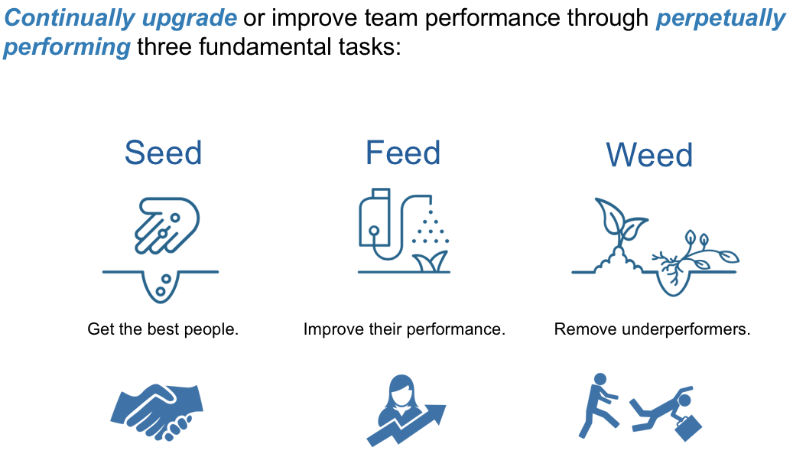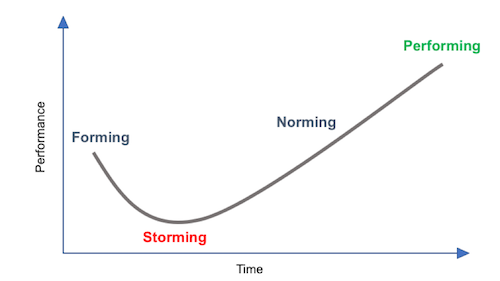
Photo by Jehyun Sung on Unsplash
This is the second in a three-part series presenting leadership principles for product and tech executives. This week’s entry covers principles of team construction and workflow within product and engineering teams. The first in the series covering principles related to the leader him/herself.
V. Design and Build Empowered, Durable and Accountable Teams
What it is:
We (AKF) prefer to set high standards for the people on our teams, hiring folks who will guarantee to get something done. If someone hires the right folks, that person’s job transitions to a support role of helping the team accomplish the mission rather than supervising them through mission accomplishment. You move from demanding to see progress to asking how you can help them get results faster.
Further, we feel that if someone builds a team to be both empowered, accountable, and long tenured, great things will happen.
Never tell people how to do things. Tell them what to do and they will surprise you with their ingenuity. - General George S. Patton
We prefer that teams be constructed to have all the necessary tools and people within the team to properly “own” the entire outcome. Team construction, not statements, are what engender empowerment; a team is empowered only if it is comprised of the tools and skills to complete a task. Anything else is delegation – not empowerment. The concepts of empowerment and accountability are also reciprocal; a lack of empowerment makes accountability difficult and empowerment without accountability engenders moral hazards and poor results.
A review of the research behind durable, empowered, and accountable teams can be found in our white paper on cross functional product teams.
What you can do to improve
The below is a cheat sheet from our whitepaper on durable product teams.
- Form cross functional teams comprised of all skills necessary to own a business outcome.
- Ensure those teams are durable – lasting at least 18 months and up to 36 months.
- Ensure that teams “own” product and technology components, and that no two teams “own” the same component.
- Set high standards for team outcomes, and hold empowered teams to be accountable to achieve those standards.
VI. Weed, Feed and Seed Your Team

What it is:
We have a fiduciary obligation to do our best and achieve the best possible outcomes for our stakeholders. To meet that obligation, we must have the best possible team given our budgetary constraints.
Consider the NFL. General Managers have salary caps to help level the playing field – just as we have budgets. To field the best possible team, they must constantly be looking for the best talent possible at the lowest possible price. Paying top dollar for an aging receiver who can no longer run a 4.4 40 and create separation simply does not make sense. Similarly, skewing the team to one age extreme or another can ensure that you are not viable short term or don’t have an answer for long term viability. The general manager must always be looking to:
- Remove overpaid and underperforming players.
- Add exciting, talented new players to augment the team.
- Build a coaching staff to make the players better individually and as a team.
The GM above is weeding, seeding, and feeding her team. So too must we tend to our gardens as executives. Weeding is removing underperforming individuals or individuals who behave inconsistently with our cultural and behavioral expectations. We too often delay this step in favor of other activities. I’ve never heard a manager say they wished they had taken more time to remove a person; far too often we hear “I wish I had removed John earlier”.
Similarly, managers wait far too long to be building a bench of future teammates. Contrast the manager who sees recruiting as an HR function with the manager that is “always recruiting” and trying to find the next team member at both social and work events. The latter has a strong advantage over the former.
Feeding is the activity of helping grow teammates. We look to grow our teammates in both breadth and depth. Breadth covers the range of skills to create a specific team’s desired outcomes. Back end engineers learn aspects of front end development, database design, dev/ops, etc. Depth deals with becoming better without a specific domain such as systems reliability engineering or back end development.
What you can do to improve:
Following from the explanation above.
- Weed: Remove underperforming individuals or individuals who behave poorly. Do so quickly such that they do not become a burden to the team.
- Seed: Always be looking for the next great talented individual you want on your team. Do not wait for a departure or removal of an employee to build a bench of contacts with whom you would love to work.
- Feed: Spend most of your time with the teammates who are performing at or above standard. Help them broaden and deepen their skillset.
- Set high standards for team outcomes and hold empowered teams to be accountable to achieve those standards.
VII. Move Work to Teams, Never Form Teams Around Work
What it is:
Far too often our clients see engineers and product managers as a fungible pool of resources that can be constructed on demand into teams for specific purposes. Such an approach laughs in the face of the notion of team identity and runs counter to the advice from all research regarding high performing teams.
Tuckman’s stages of development clearly indicates that teams go through phases of productivity and performance related to the tenure of the team. While not every team is guaranteed to reach a high performing stage, we know that short lived teams are guaranteed to have low relative throughput compared to a long tenured “durable” team.

Further, the notions of ownership and accountability are also directly correlated with tenure. A team that forms around an initiative and is subsequently disbanded essentially “orphans” the solution they produced or the problem they solved. This invites future similar problems and engenders barriers to continuous improvement and organizational learning.
A better (we argue the “only”) solution is to build experientially diverse, cross functional teams of long tenure and move work to those teams.
What you can do to improve:
- Create experientially diverse, cross functional teams and ensure they live for at least 18 months and up to 3 years.
- Move work to teams.
- Never form teams around work, unless it is a business crisis for which no single team is best equipped to solve.
The last post in our series on leadership principles covers principles related to team dynamics and behaviors.
Need help with any of the principles above? AKF Partners offers a full set of services for product and technology companies including organizational consulting and personal coaching.